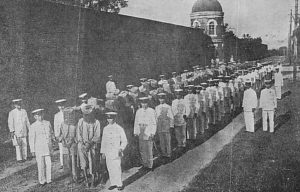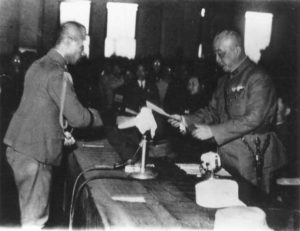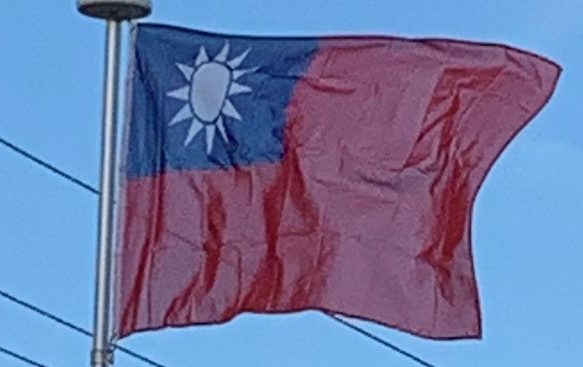Japanese colonial rule was instrumental in the industrialization of the island, extending the railways and other transport networks, building an extensive sanitation system, and establishing a formal education system in Taiwan. Japanese rule ended the practice of headhunting. During this period the human and natural resources of Taiwan were used to aid the development of Japan and the production of cash crops such as rice and sugar greatly increased. By 1939, Taiwan was the seventh greatest sugar producer in the world. Still, the Taiwanese and aborigines were classified as second- and third-class citizens. After suppressing Chinese guerrillas in the first decade of their rule, Japanese authorities engaged in a series of bloody campaigns against the mountain aboriginals, culminating in the Musha Incident of 1930. Intellectuals and laborers who participated in left-wing movements within Taiwan were also arrested and massacred (e.g. Chiang Wei-shui (蔣渭水) and Masanosuke Watanabe (渡辺政之輔)).

Around 1935, the Japanese began an island-wide assimilation project to bind the island more firmly to the Japanese Empire and people were taught to see themselves as Japanese under the Kominka Movement, during which time Taiwanese culture and religion were outlawed and the citizens were encouraged to adopt Japanese surnames. By 1938, 309,000 Japanese settlers resided in Taiwan.
Taiwan held strategic wartime importance as Imperial Japanese military campaigns first expanded and then contracted over the course of World War II. The “South Strike Group” was based at the Taihoku Imperial University in Taipei. During World War II, tens of thousands of Taiwanese served in the Japanese military. Over 2,000 women, euphemistically called “comfort women“, were forced into sexual slavery for Imperial Japanese troops.
The Imperial Japanese Navy operated heavily out of Taiwanese ports. In October 1944 the Formosa Air Battle was fought between American carriers and Japanese forces based in Taiwan. Important Japanese military bases and industrial centers throughout Taiwan, such as Kaohsiung and Keelung, were targets of heavy raids by American bombers.
After Japan’s surrender ended World War II, most of Taiwan’s approximately 300,000 Japanese residents were expelled and sent to Japan.
Republic of China Rule:
While Taiwan was still under Japanese rule, the Republic of China was founded on the mainland on 1 January 1912, following the Xinhai Revolution, which began with the Wuchang uprising on 10 October 1911, replacing the Qing dynasty and ending over two thousand years of imperial rule in China. From its founding until 1949 it was based in mainland China. Central authority waxed and waned in response to warlordism (1915–28), Japanese invasion (1937–45), and the Chinese Civil War (1927–50), with central authority strongest during the Nanjing decade (1927–37), when most of China came under the control of the Kuomintang (KMT) under an authoritarian one-party state.

After the Surrender of Japan on 25 October 1945, the US Navy ferried ROC troops to Taiwan to accept the formal surrender of Japanese military forces in Taipei on behalf of the Allied Powers, as part of General Order No. 1 for temporary military occupation. General Rikichi Andō, governor-general of Taiwan and commander-in-chief of all Japanese forces on the island, signed the receipt and handed it over to General Chen Yi of the ROC military to complete the official turnover. Chen Yi proclaimed that day to be “Taiwan Retrocession Day“, but the Allies considered Taiwan and the Penghu Islands to be under military occupation and still under Japanese sovereignty until 1952, when the Treaty of San Francisco took effect. Although the 1943 Cairo Declaration had envisaged returning these territories to China, it had no legal status as treaty, and also in the Treaty of San Francisco and Treaty of Taipei Japan renounced all claim to them without specifying to what country they were to be surrendered. This introduced the disputed sovereignty status of Taiwan and whether the ROC has sovereignty over Taiwan or only remaining over Kinmen and Matsu Islands.
